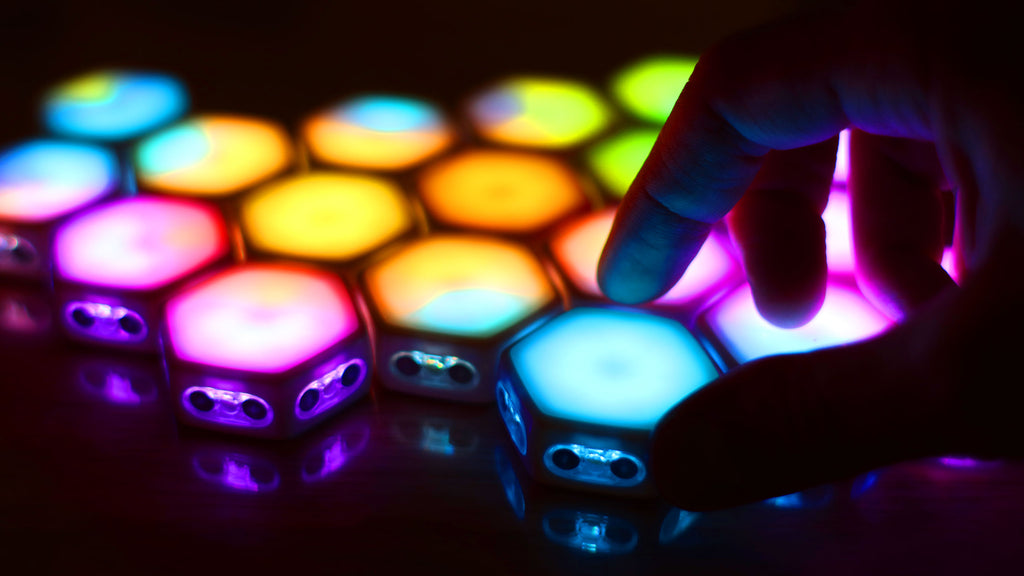We at Move38 are committed to sustainability and we wanted to highlight some ways which we achieve our goals. This may seem counter-intuitive as Blinks are made of plastic and electronic components but we've deeply considered all aspects to our design and processes.
Only Plastic is the Blinks themselves.
At every opportunity, we've opted for recyclable or bio-degradable materials for packaging and shipping. Now that we've taken shipping in-house, we use a paper-wrap instead of bubble-wrap and paper tape instead of plastics for the shipping boxes.
In addition to beautiful packaging of the Blinks, we avoid wasteful plastic trays and instead used custom designed paper-pulp trays. These trays are not glued to the box, so the boxes can be reused in your household.
Batteries
The choice of batteries. Lithium-metal batteries are non-toxic compared to Li-on which are toxic and give electronics short lifespans. Blinks are optimized for low power consumption to minimize the need to replace batteries. Even Apple caught on and have user replaceable batteries in their newly released AirTags following our leading example with Blinks. User-Replaceable Batteries means that the lifetime of the product is extended way beyond the 1-2 years that you could get with embedded batteries and the use of these batteries is minuscule compared to the power your phone, Switch, or iPad requires.
Long-lasting design
Blinks are designed to work for generations to come. In fact, we manufacture with the same factory as LEGO. The polycarbonate enclosures are durable for play at any age, and the neodymium magnets will last for generations. By using a user-replaceable battery discussed above, we insure that your Blinks will live an extended lifetime and grow with you.
Sustainable Distribution
In 2020, we did a complete overhaul of Blinks packaging to reduce the use of materials and bring down shipping costs.
To reduce our carbon footprint, and yours, this year, we shrunk our packaging by more than 60% in volume and more than 35% in weight.
Reflecting on this process, Jon says:
When I was in design school, I was taken by the idea of Cradle to Cradle design. By building quality products that last, we are committing to reducing waste. Because our product involves plastic and electronics, we source from the best manufactures in the world and then made sure our packaging was entirely recyclable or better yet, biodegradable. By reducing the amount of material in the packaging, we are more eco friendly and just as importantly for a small business, cost friendly. We've got nearly 30% of our customers abroad and international shipping is directly correlated to weight and volume. Similarly our domestic shipping can be cut in half just by shrinking the packaging. Instead of having to pass more costs on to our customers, a well-considered redesign makes our product a more sustainable bet in these uncertain times.

